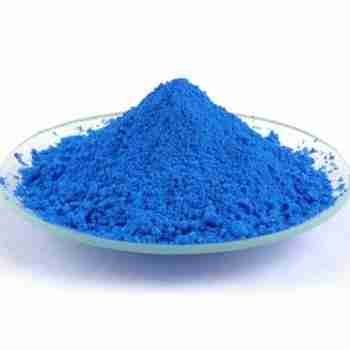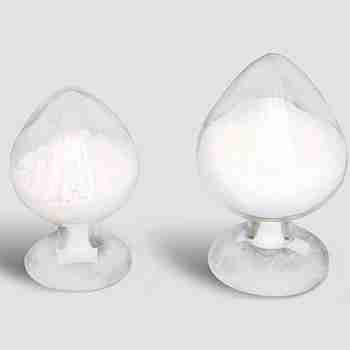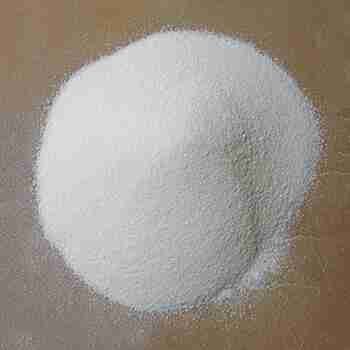C-Phycocyanin Cas 11016-15-2
Chemical Name: C-Phycocyanin
CAS No.: 11016-15-2
Molecular weight:?426.67
Appearance: BLUE POWDER
Assay??80%
发送询盘
Description
C-PHYCOCYANIN Quick Details
Chemical Name: C-Phycocyanin
CAS No.: 11016-15-2
Molecular Fomula:/
Chemical Structure:/
Molecular weight:?426.67
Appearance: BLUE POWDER
Assay??80%
PHYCOCYANINTypical Properties
Appearance
Blue?powder
Odor/Taste
Characteristic
Solubility
Water soluble
Impurity
None visible?impurity
Color value
??250unit
Loss?on?drying
??7.0%
Protein?(g/100g)
15-70%
Phycocyanin?(g/100g)
10-60%
Lead?(Pb)
??0.9?(mg/kg)
Arsenic?(As)
??0.5?(mg/kg)
Mercury?(Hg)
??0.05?(mg/kg)
Total?plate count
??1000?(CFU/g)
Mold*
??300?(CFU/g)
Coliforms
??10?(CFU/g)
C-PHYCOCYANIN??application:
The application research of phycocyanin is very common and can be summarized in the following aspects: (1) Natural food pigments: Phycocyanin is a water-soluble pigment, pure blue, clear and lovely, and can be used as a food colorant and additive in cosmetics. And it is very rich in protein itself. (2) Medical and health food: In vitro experiments of phycocyanin have proven that it can stimulate the formation of red blood cell colonies, similar to the effect of erythropoietin (EPO). Phycocyanin can help regulate the synthesis of a variety of important enzymes needed by the human body, and plays an important role in inhibiting the growth of cancer cells. It can also regulate the body??s immune system, enhance the function of the immune system, and improve the body??s resistance to disease. (3) Cosmetics field: Phycocyanin is a collagen-like protein with antioxidant, moisturizing, anti-allergic, and freckle removal effects. (4) Special reagents for biology, chemistry and cytology experiments: Phycocyanin is blue and fluorescent, and can be used as a reagent for some photodynamic research in biology and cytology. It can also be used as a biochemical marker.
C-PHYCOCYANIN?Packaging and Shipping?
customized according to customer needs.
C-PHYCOCYANIN?Storage
It should be stored in a clean, dry and cool place, preventing from sunlight, rain.
| 5 |
|
0 |
| 4 |
|
0 |
| 3 |
|
0 |
| 2 |
|
0 |
| 1 |
|
0 |
- 2
- 2-diallylpent-4-en-1-amine
- 4
- 95-16-9
- Ammonium sulfamate
- Benzothiazole
- cas:67889-00-3ح2
- cas:83524-75-8 | pigment black 32
- cas:928836-00-4 | 2
- cas:932745-70-5 | 4
- Chemical Minerals
- Coconut diethanolamide
- Daily Chemicals
- discount
- for sale
- General pvc resin
- hexyl D-glucoside
- in stock
- Lauramidopropyl betaine
- LAURIC ACID MONOETHANOLAMIDE
- Petroleum Additives
- Plasticiser
- Ploymers
- price
- PVC
- quotation
- Raw Materal
- Remove term: Petroleum Additives Petroleum Additive
- SODIUM ETHYL 2-SULFOLAURATE
Related Products
Chemical Name: Zinc citrate
Synonyms: Zinc citrate trihydrate
CAS No.: 546-46-3
Molecular Formula: C6H8O7Zn
Molecular Weight: 257.5
Appearance: White powder
Chemical Name: o-Xylene
Synonyms: 1,2-Dimethylbenzene; ortho-xylene
CAS No.: 95-47-6
Molecular Formula: C8H10
Molecular Weight: 106.17
Chemical Name:?UDP-Glucuronic Acid Trisodium
CAS No.: 63700-19-6
Molecular Fomula: C15H23N2NaO18P2
Molecular weight: 604.28
Appearance: Solid
Assay: 98%
Chemical Name: UV-120
Other Name: (2’,4’-Di-tert-butylphenyl 3,5-di-tert-butyl-4-hydroxybenzoate)
CAS No.: 4221-80-1
Molecular Fomula: C29H42O3
Molecular weight: 438.66
Assay: ≥99%(LC)
Polyglutamic acid (CAS 25513-46-6) is usually in the form of white powder.
Polyglutamic acid is a high molecular compound with good water solubility and biocompatibility.
It has many excellent properties, such as water retention, plant growth promotion, and improved fertilizer utilization. In the agricultural field, it can be used as a fertilizer enhancer, water retainer, etc., which helps to improve the fertility and water retention capacity of the soil and promote the growth and development of crops. For example, adding it to fertilizer can reduce fertilizer loss and improve the effect of fertilizer.
In the field of cosmetics, polyglutamic acid is also used, because its moisturizing properties can be used in skin care products.
Ectoine is a naturally occurring osmoprotectant, a cyclic amino acid derivative that offers exceptional cell-stabilizing properties. Highly valued in cosmetics and pharmaceuticals, it enhances product efficacy by maintaining cell integrity under various environmental stresses.
Chemical Name: 3-Hydroxybutyric acid
CAS No.: 625-71-8
Molecular Formula: C4H8O3
Molecular Weight: 104.1
Appearance: White powder
Hydroxyproline is a non-essential amino acid divided from another amino acid called proline. It is created by the communication of proline with ascorbic acid vitamin C. This process produces a hydroxyl team bound to a hydrogen-oxygen particle, which is affixed to a carbon particle of proline as well as converted to hydroxyproline.Trans-4-hydroxy-l-proline is an optically energetic form of 4-hydroxyproline with l-trans setup. It can be used as human metabolite, plant metabolite and also computer mouse metabolite. It is an tautomer of trans-4-hydroxy-l-proline zwitterions.
Chemical Name: Imazalil Sulfate
CAS No.: 58594-72-2
Molecular Formula: C14H14Cl2N2O.H2SO4
Molecular Weight: 395.26
Appearance: Solid
Chemical Name: beta-NADH disodium salt
Other name: beta-Nicotinamide adenine dinucleotide disodium salt
CAS No.: 606-68-8
Molecular Fomula: C21H30N7NaO14P2
Molecular weight:?689.44
Appearance:?white to light yellow powder
Assay: 95%min
EC 3.4.21.14, previously classified, now redirects to EC 3.4.21.67, identifying endopeptidase So. This serine endopeptidase is integral in the hydrolysis of peptide bonds, a critical function in biological systems. Its applications extend across research and development in the pharmaceutical and biotechnological industries.
Chemical Name: Potassium Castorate
CAS No.: 8013-05-6
Molecular Formula: C57H107K3O12
Molecular Weight: 1101.74718
Appearance: Yellow Liquid



















Reviews
There are no reviews yet.